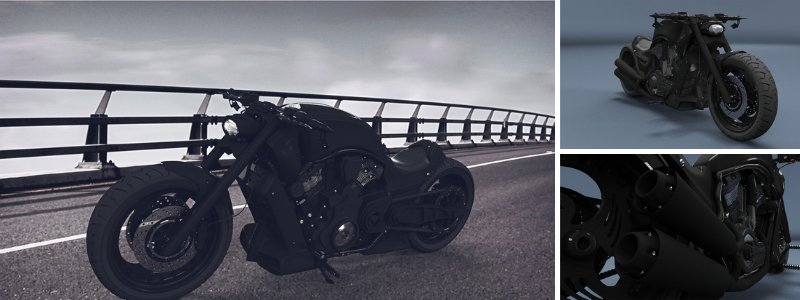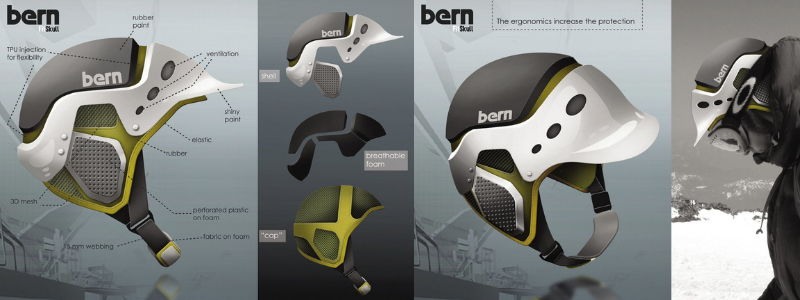How can you utilize 3D product visualization to boost sales and prevent returns? Today’s customers are smarter and pickier. When it comes to making online purchases, they want to be 100% sure that the product they buy will look and function as advertised. Many potential clients leave online stores without buying anything because the photos cannot accurately illustrate the product’s features. Images show them nothing but simple color variations or material options.
Photography and two-dimensional renderings are realistic, although they may not be the best choice to increase sales and prevent returns. There needs to be a better method to present products on web pages. The most likely answer is CGI or computer-generated imagery in a three-dimensional perspective. Even the most skeptical clients will have a hard time denying that 3D visualization can describe any product comprehensively.
Its major selling point is the all-around 360-degree product view, allowing buyers to see the product from every angle and have a detailed look at product components, material texture, finishing quality, and how it works. Sellers can also add some interactive elements to the visualization to establish a personalized and enhanced shopping experience. Let’s take a look at some ways 3D product modeling services can help your store make more money.
RELATED: 3D Rendering Costs & 3D Visualization Prices for Firms
Increase sales with 3D product visualization services
Online retail businesses have grown to a point where brick & mortar establishments are a rare breed. Just about everything is now available online with all the convenience and practicality of online shopping. If there is one area where virtual shops cannot possibly compete with their offline counterparts, it’s the nature of the interaction between buyers and products.
In physical stores, people can see and touch the available products and inspect all the details in the flesh, plain and simple. If they bump into confusion and have questions, there is someone there to provide all the answers. Buyers check the products and communicate with a sales representative in person.

Online stores cannot provide such a level of interaction. You can see the product photos, but not touch them. Although it’s easy to call or send messages to customer service, communication is done via phone or text. When buyers don’t get enough information about the product, they may leave or make a purchase only to return it later. Either way, the online store fails to convert a visitor into a profitable business relationship.
What the store can do is intensify the amount of information (about a product) any buyer can get with more detailed product images. Instead of using traditional photography, an online store must utilize CGI-based visualization. Don’t forget that web pages can display complex 3D renderings with 360-degree view and animation made by 3D rendering services.
Customers purchase for various reasons. While 3D product visualization is not the only factor in the decision-making process, it helps them get closer to that.
Attractive presentations
For any retail business, product catalogs are the business cards. Similar to any business card, design is of the utmost importance. Customers will determine whether your store is run by professionals by looking at how the catalogs are made. They visit online stores to get more information about the products they want to buy, but the first thing they see is always the images.
Some products are best visualized in lifestyle images, as in the way they are supposed to be used. For example, an online store that sells aftermarket wheels will show how the products should look when fitted into multiple cars. Lifestyle image represents a product in a living environment. It is effective but not as informative as silo imagery.
RELATED: How to Evaluate the Quality of a 3D Model for Parts & Products
The lifelike background is great for a marketing campaign. If you’re aiming to provide information, however, nothing is more practical than silo imagery with a plain black or white background. This is where you can illustrate the product the way it actually is without additional elements to distract buyers’ focus. Silo imagery should be easier to create for photographers or CGI artists. When a 360-degree view is required, the latter is better.
CGI artists can introduce another layer of sophistication by adding an interactive interface to the imagery. Common controls like zoom, rotate, and spin draws customers into taking a detailed look from every angle. Being comprehensively informative is the main point, and the interactive visual format in which you achieve that purpose makes it even better.

Animated product image
Even in the absence of interactive elements, customers are still able to collect as much information as they need about a product via an animated model. The term “image” is inaccurate here – a “video” is more appropriate. Animations allow sellers to display the image from any angle. Buyers cannot control the sequence other than Play, Stop, Pause, and perhaps a timeline slider.
If the product has moving parts, an animated model can show how it does all the mechanical work in the video. An exploded view of a product can be presented in an animated video as well, with written text to describe each component. Work with our freelance 3D product animators to take your imagery to the next level.
Since buyers cannot control the perspectives, a CGI artist has to create a video that accommodates multiple viewpoints to highlight the most important design elements or sections of the product. Additional components such as decorative parts must be in the frame too but with less emphasis. The main goal is to let customers evaluate the entirety of the product so they can make informed buying decisions.
Product visualizations prevent returns & refunds
Bigger online stores with more products have a higher likelihood of returns. Reverse logistics can be a complication that takes away time and money otherwise utilized for marketing and other areas of business. In addition to increasing warehouse capacity, sellers probably need to hire more employees to handle returned goods.
According to Invespcro, about 30% of products ordered online are returned, whereas the return rate for products bought in brick and mortar stores is only at less than 9%. Of all the buyers who send back the products they purchase, at least 22% mention they do it because the products they receive look different from the images displayed in the online stores.

A major part of the problem is a poor product image. As realistic as photography is, the method does not offer the same kind of interaction customers can get from a CGI-based alternative. 3D product visualization helps prevent or at least reduce product returns for the following reasons.
360-Degree view of product
Online stores have one drawback in common: buyers lack the ability to hold any product in their hands, which means customers never exactly know what they’re buying until they get it. Product images can help, although they may still give the wrong impressions on how the products look from the sides, back, top, and bottom. Many product images only display the front view.
Photorealistic 3D visualization improves the situation by providing 360-degree viewpoints. Customers will be able to rotate the image in all directions. Quality 3D models display even the tiniest details in high resolution, so the clarity and sharpness are retained when viewed on a large screen. Miniscule imperfections are visible, but at the same time, tiny important details are noticeable too. Buyers get a comprehensive understanding of what they want to purchase and make an educated decision.
View inside a product
A lot of shoppers are too reluctant to read long descriptions. Buyers take a glance at the images, think that the product looks good, and click the “Buy” button without a second thought. They rely mostly on images to make the purchase decision, but then regret it when they find out the product is not exactly what they expected.
For instance, a person who thinks that a cabinet features removable vertical and horizontal dividers might be disappointed when they find out the dividers are fixed in place. The problem is, the buyer will only realize the issue after the delivery. As a result, the product is sent back to the online store. It is a waste of time and energy for both the buyer and the store.
An effective way to prevent the problem is to display the product image in 3D cutouts. Every removable section is clearly marked (or perhaps animated), letting buyers see the internals in detail. The drawers can slide in and out with few clicks, and the dividers can slide back and forth to give an idea of how the cabinet looks like in multiple configurations.
Related: 3D Rendering Costs & 3D Visualization Prices for Firms
Realistic textures
To save money on photography costs, some online stores simply say “available in other colors” without actually showing the options in images. Such a description sounds effective and simple, but also leads to confusion.
Thanks to 3D visualization services, it is easy to choose every single color variation with just a click. Buyers can apply various color options simply by choosing the appropriate button right next to the image. This avoids confusion and ultimately reduces returns.
One of the best things about 3D product visualization is that online stores can give away detailed information to buyers without using lengthy text descriptions. Overload of written specifications, features, and technical explanations can be comfortably omitted without hurting sales. Furthermore, the 360-degree view and animation are both enjoyable visual treatments your online store visitors love to see.
Cad Crowd’s product visualization services can help
At Cad Crowd, we work with a network of some of the best product visualization services on the market. Our freelancers have worked on projects for companies like Tupperware and Tiffany & Co. If you need help with a project, get a free quote today.
